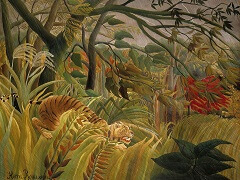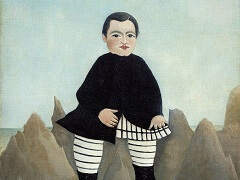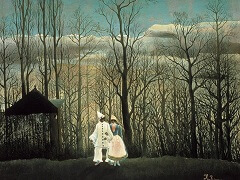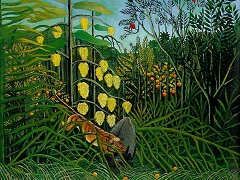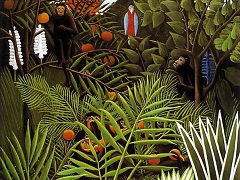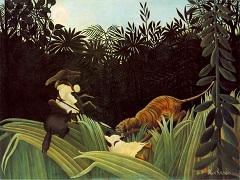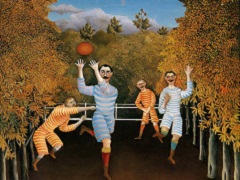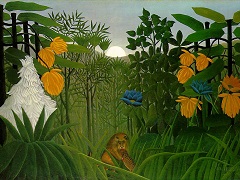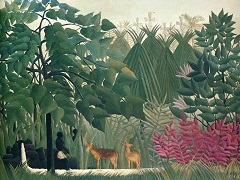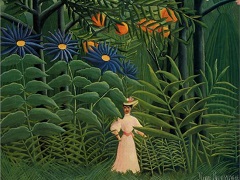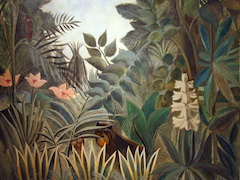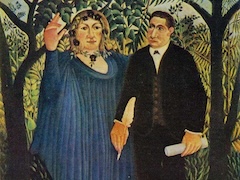The Sleeping Gypsy, 1897 by Henri Rousseau
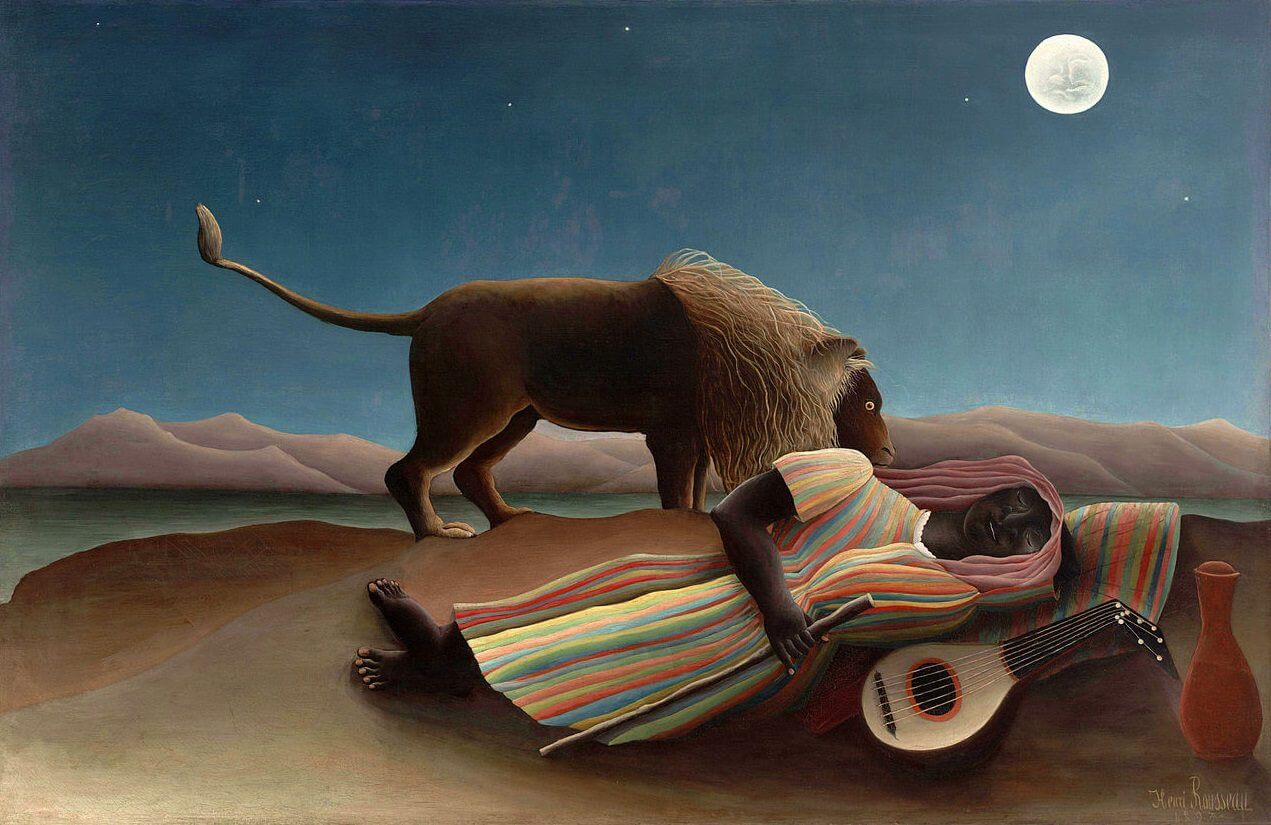
The Sleeping Gypsy is created by Henri Rousseau at 1897. With a mysterious poetry, the lion visits the gypsy woman and her mandolin in this masterful composition that somehow employs hard lines and flattish perspectives to great advantage.
In The Sleeping Gypsy, Rousseau portrays an African gypsy in a desert wearing an Oriental costume. She lies beside an Italian stringed instrument and jar of water. These items each have significant importance to the cultures in which they belong. The Oriental frock and mandolin are all customary to their respective Asian and Italian cultures. However, Rousseau decides to mix them all together in his own painting.
Rousseau was largely a self-taught painter.Although he had ambitions of entering the academy, this was never realized. But the sharp colors, fantastic imagery, and precise outlines in his work derived from the style and subject matter of popular print culturestruck a chord with a younger generation of avant-garde painters.
Rousseau described the subject of The Sleeping Gypsy thus:
A wandering Negress, a mandolin player, lies with her jar beside her (a vase with drinking water), overcome by fatigue in a deep sleep. A lion chances to pass by, picks up her scent yet does not devour her. There is a moonlight effect, very poetic. ”
The fantastical depiction of a lion musing over a sleeping woman on a moonlit night is one of the most recognizable artworks of modern times.
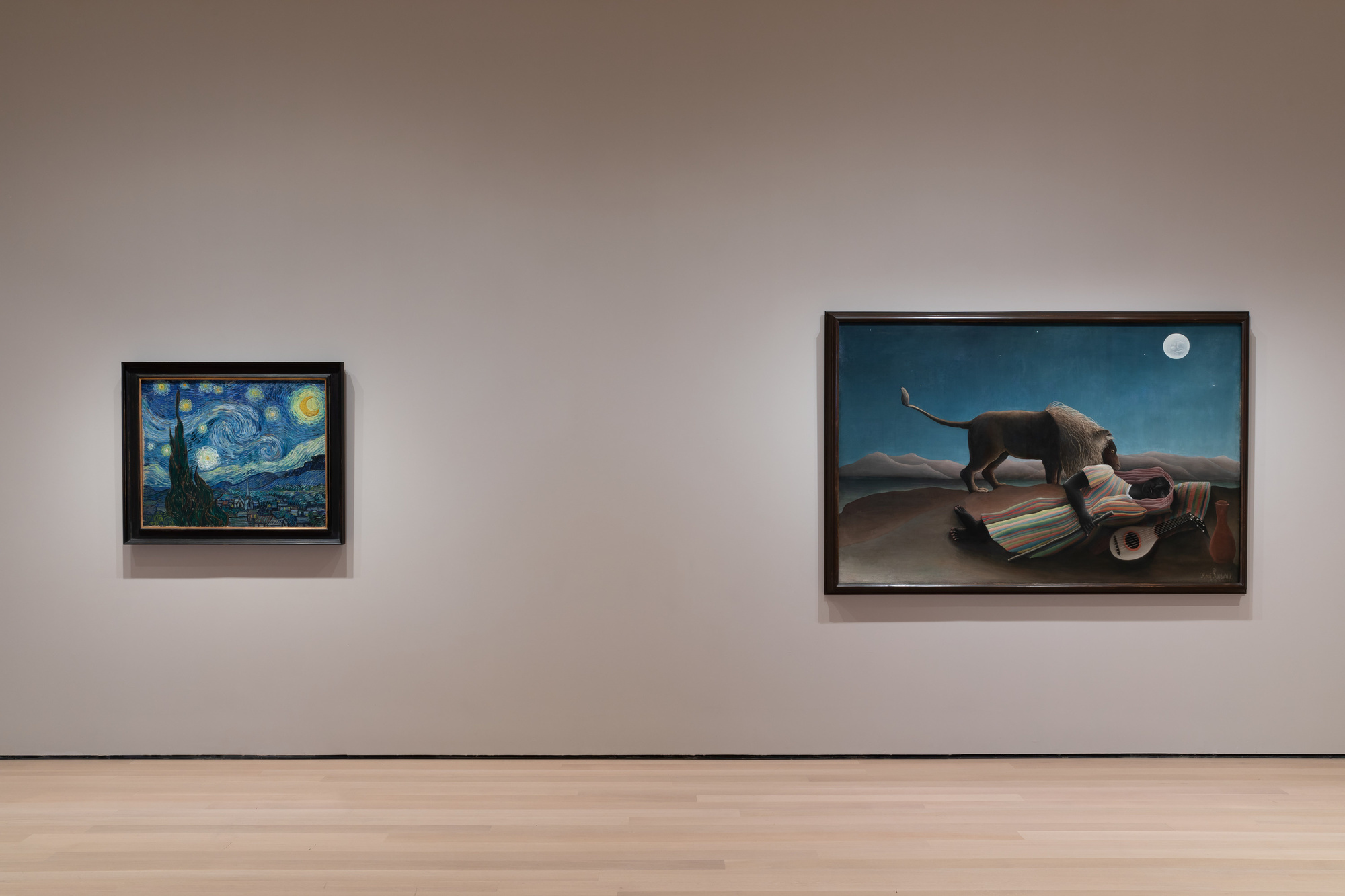
Thel Sleeping Gypsy is now a permanent collection of MOMA, displayed along side with Starry Night, the masterpiece by Van Gogh


